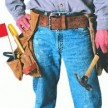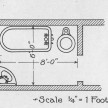Like a Lead Balloon, Comes Lead Paint Regulations!

Image: http://keetsa.com/
Lead Paint Issues
Lead Paint Regulations
These new EPA lead paint regulations could well be “kick in the pants” for the way companies “price and process their jobs.”
What remains unknown is whether homeowners will be able to “opt out” of safe lead-removal practices and whether or not at some point third-party inspectors will be required to verify that a job site is free of lead dust. The third-party inspection component would be time consuming and COSTLY!!
Lead Dust Regulations
The new regulations make contractors responsible for determining whether or not lead-based paint is present in homes built before 1978, for containing any dust or debris created in the course of a renovation, and for ensuring that the work area is free of lead-bearing dust particles when the job is finished.
The contractor is responsible to inform the homeowner when lead-based paint is present, to document that the homeowner was informed and that the work was done safely and at least supervised by a Certified Renovator, that is, someone who has earned a certificate after completing an eight-hour course by an EPA-approved trainer. My class is scheduled for next month.
Lead Certified Renovator
To be able to work in homes where lead-based paint is present, companies must register with the EPA, and in order to register, the company must have at least one Certified Renovator on staff.
Assuming your company is registered and has a Certified Renovator on staff, here’s what will be different after April 22:
1) You’ll need to know if the house you’re working on or in was built before 1978. If the homeowner doesn’t know, it’s still your responsibility to find out.
2) If it is pre-1978, and the job you’re about to do involves removing or disturbing paint, you’ll probably need to test for the presence of lead in that paint. Which meas you’ll need test kits.
If the presence of lead is a near-certainty, you could save yourself the time and expense of testing by simply assuming that it is there and operate accordingly. In some markets — such as the Midwest and the Northeast — a large percentage of the housing stock pre-dates 1978.
3) In the event that your company is audited, nothing you do on any particular job to practice safe lead removal will mean anything unless it’s documented. You are obligated to inform the homeowner if you find lead and have him or her sign off on it. Should the EPA or a state agency come knocking that too should be in the job file. For how long? At least three years.
4) Before beginning work you’ll need to post warning signs indicating that lead-based paint will be disturbed on the job site. You’ll then set up the job so as to prevent any lead-bearing dust from spreading through the house.
This will involve putting down plastic sheeting on the floor and taping plastic “walls” around the perimeter of the work area, covering HVAC openings, and similarly wrapping or protecting the home owner’s possessions.
5) Burning or power-sanding lead paint, which releases lead into the air, is forbidden. Removal of paint will only be accomplished with approved chemical strippers.
6) When the work is complete, thoroughly wet- and dry-mop the area to remove any lingering dust from surfaces. Verify and document.
Lead Renovation and EPA Documentation:
It is extremely important to prove that your company took the proper steps to contain lead-paint dust disturbed in the course of a remodel or home improvement project and cleaning up to ensure that no toxic dust remains. Just as important is leaving a paper trail that proves your company took all precautions and required measures.
Lead Documents include:
1) The results of whatever testing for lead you did in the house.
2) A document signed by the home-owner indicating that you or your representative informed him or her of the dangers associated with lead-based paint being disturbed, including hand-off of the EPA pamphlet “Renovate Right.”
3) If the owner elects to opt out of safe lead-removal procedures for the sake of cost or convenience, you’ll also need a form stating so and also bearing the home owner’s signature.
4) Names of your Certified Renovator and all technicians working on the project.
5) A checklist indicating that the job site was posted as unsafe, was properly contained, and was cleaned by both wet- and dry-mopping, and that lead-safe work practices were used. I also suggest taking digital pictures, printing them out and adding them to the paperwork.
6) Test results of a clearance exam indicating that no lead dust remained in the work area after completion.










